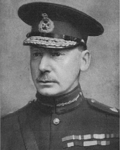Boundaries and boundary changes
1918–1950: The Borough of Wenlock, the Urban Districts of Dawley, Newport, Oakengates, and Wellington, and the Rural Districts of Newport, Shifnal, and Wellington.
When originally constituted, the constituency, with a population of 71,352, was the largest division of Shropshire created in the 1918 boundary changes. [2]
1950–1983: The Urban Districts of Dawley, Newport, Oakengates, and Wellington, and the Rural Districts of Shifnal and Wellington.
1983–1997: The District of The Wrekin wards of Arleston, Brookside, College, Cuckoo Oak, Dawley Magna, Donnington, Donnington Wood, Dothill, Ercall, Hadley, Haygate, Hollinswood/Randlay, Ironbridge (The Gorge), Ketley, Ketley Bank, Langley, Lawley, Leegomery, Lilleshall, Madeley, Malinslee, Park, Priorslee, Stirchley, Wombridge, Woodside, Wrockwardine, and Wrockwardine Wood.
In the Third Periodical Review of the Boundary Commission, which took effect for the 1983 general election, the constituency was redefined after major local government changes. This redefinition resulted in approximately one quarter of the electorate being removed to North Shropshire (Newport) and Ludlow (Shifnal). [3]
1997–2010: The District of The Wrekin wards of Arleston, Church Aston, College, Donnington, Donnington Wood, Dothill and Park, Edgmond, Ercall, Ercall Magna, Hadley, Haygate, Ketley, Leegomery, Lilleshall, Newport East, Newport North, Newport West, and Wrockwardine, and the District of Bridgnorth wards of Albrighton, Idsall, Manor, and Sheriffhales.
Parliament approved major boundary changes which took effect at the 1997 general election, which created a new constituency containing and named after the town of Telford, before which Telford had been one of the largest elements of The Wrekin. The new Telford constituency took 62.9% of the electorate of The Wrekin leaving the remaining 37.1% to constitute a revised constituency of The Wrekin that incorporated areas previously within North Shropshire and Ludlow (mainly comprising areas which had previously been in the constituency prior to 1983). [4]
2010–2024: The Borough of Telford and Wrekin wards of Apley Castle, Arleston, Church Aston and Lilleshall, College, Donnington, Dothill, Edgmond, Ercall, Ercall Magna, Hadley and Leegomery, Haygate, Muxton, Newport East, Newport North, Newport South, Newport West, Park, Shawbirch, and Wrockwardine, and the District of Bridgnorth wards of Albrighton South, Donington and Albrighton North, Shifnal Idsall, Shifnal Manor, and Shifnal Rural.
Boundary changes to realign the constituency boundaries to fit with the borough's most recent ward revisions resulted in the removal of Ketley to the constituency of Telford for the 2010 general election. [5]
2024–present: Further to the 2023 Periodic Review of Westminster constituencies (based on local authority wards in place on 1 December 2020) and taking into account a further local government boundary review in the Borough of Telford and Wrekin which came into effect in May 2023, [6] [7] the constituency now comprises the following from the 2024 general election:
- The County of Shropshire electoral divisions of: Albrighton; Cheswardine; Hodnet; Shifnal North; Shifnal South and Cosford.
- The Borough of Telford and Wrekin wards of: Admaston & Bratton; Apley Castle; Arleston & College; Church Aston & Lilleshall; Donnington (nearly all); Edgmond; Ercall; Ercall Magna; Hadley & Leegomery; Haygate & Park; Lawley (small part); Muxton; Newport East; Newport North; Newport South; Newport West; Shawbirch & Dothill; Wrockwardine. [8]
The electoral divisions of Hodnet and Cheswardine were added from the North Shropshire constituency and there was a small adjustment in the Telford and Wrekin Borough.
In its initial proposals, the boundary commission put forward the new name for the constituency of "Wellington and Newport"; this met with opposition locally and was dropped in the revised proposals. [9]
The area almost encircles Telford, a 'New Town', encompassing much of the rural parts of the Telford and Wrekin borough, in which most of the constituency is. Its major settlements include: Wellington, Newport and Shifnal, as well as the suburban northern reaches of Telford (including Donnington). A small but significant area relates to the former Bridgnorth local government district (now part of the unitary Shropshire) and contains RAF Cosford and a number of commuter villages along the M54 motorway: the civil parishes of Sheriffhales, Shifnal, Tong, Boscobel, Albrighton, Donington and Boningale make up the non-Telford and The Wrekin-administered portion.



